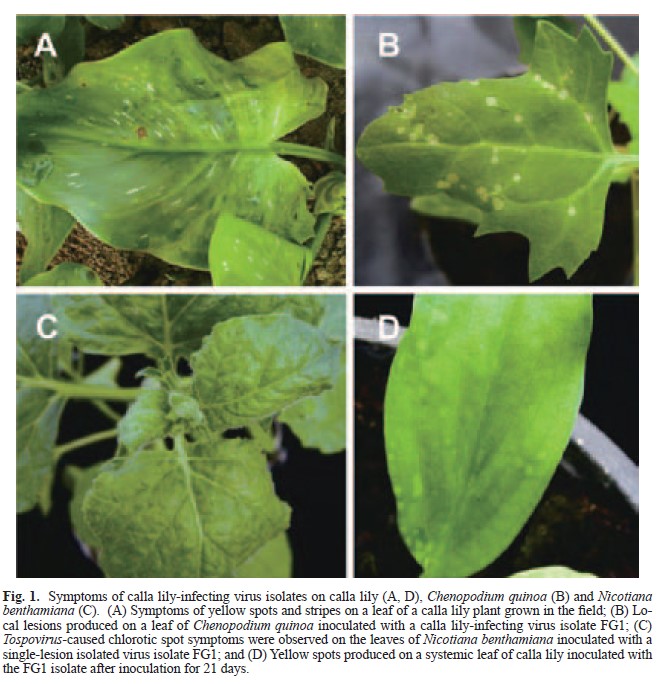All issues

Author:Tsung-Chi Chen, Chin-An Chang, Ya-Chi Kang, Shyi-Dong Yeh, Chun-Huei Huang, and Chin-Chih Chen*
Abstract:
Calla lily (Zantedeschia spp.) is one of the economically important ornamental crops in Taiwan. In a feld survey of calla lily conducted during 2005, plants showing symptoms of yellow spots and stripes on leaves were observed in Houli Township, one of the major areas for commercial production of ornamental crops in Taiwan. Fifteen virus isolates were collect-ed from diseased plants of calla lily and purifiedvia three successive local-lesion isolations on leaves of inoculated Chenopodium quinoa. A 0.9 kb DNA fragment was amplifiedfrom total RNA extracted from all the ffteen virus isolates on infected plants by reverse transcription-polymerase chain reaction (RT-PCR) using the Tospovirus genus-degenerate primers gL3637 and gL4510c, designed from the conserved regions of L RNA, revealing that the disease was caused by a Tospovirus. The virus isolates reacted positively with the antiserum to the nucleo-capsid (N) protein of Capsicum chlorosis virus (CaCV) and the monoclonal antibody to the N protein of Watermelon silver mottle virus (WSMoV), indicating that they are members of the WSMoV serogroup. The nucleotide sequences of the N gene of these virus isolates from calla lily were phylogenetically related to CaCV. Furthermore, the pathogenicity of CaCV was also verifed by inoculation tests on plants of calla lily.
Key words:Virus disease of calla lily, Tospovirus, Capsicum chlorosis virus (CaCV)
Download:![]() PDF Links
PDF Links
- 1. Development of Tractor-Mounted Seedling Transplanter for Sweet Potato
- 2. Synergistic Effect of Additional Gas on the Toxicity of Phosphine to Sitophilus oryzae and Sitophilus zeamais (Coleoptera: Dryophthoridae)
- 3. Effects of Temperature and Solar Radiation on Growth Traits and Plant Elements in Purple Leafy Sweet Potato
 Submit your manuscript
Submit your manuscript
 Guide for authors
Guide for authors